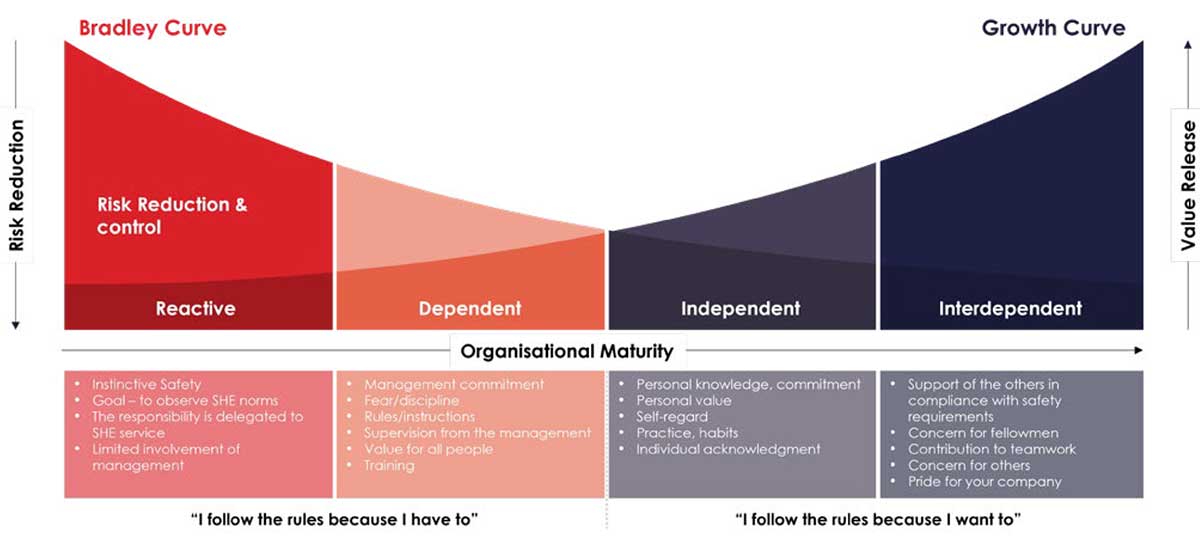Employing Affective Communication and Employee Engagement for Extraordinary Results
When describing communication as effective, the focus is on results. Affective communication, on the other hand, relates to feelings and emotions, as well as changing mindsets and behaviors. Understanding and implementing affective communication is crucial as companies strive to optimize efficiency, achieve goals, remain agile and maintain their competitive edge. When done well, the deeper connections and understanding that are developed can transform a workforce, driving morale, productivity, and ultimately, the bottom line.

For businesses to thrive, effective communication is essential. In fact, 93% of business leaders agree “communication is the backbone of business,” according to Grammarly’s 2024 State of Business Communications. Nearly two-thirds (64%) of business leaders also report effective communication leads to increased productivity, and half (49%) believe it raises employee confidence. Conversely, Gallup’s State of the Global Workplace: 2023 Report found that disengagement contributed to a loss of $8.8 trillion in productivity on a global scale.
But to be effective, communication must be affective as well.
What’s the Difference?
When describing communication as effective, the focus is on results. Affective communication, on the other hand, relates to feelings and emotions, as well as changing mindsets and behaviors. It’s where leaders connect with their employees about what they value and the feelings and emotions attached to what they value.
Understanding and implementing affective communication is crucial as companies strive to optimize efficiency, achieve goals, remain agile and maintain their competitive edge. However, it requires commitment: To engage employees on an emotional level requires an evolved strategy – and intentionality. When done well, the deeper connections and understanding that are developed can transform a workforce, driving morale, productivity, and ultimately, the bottom line.
The Need for Affective Communication
Ask any seasoned business leader, and they will agree that communication within their organization is extremely important. Research from Gallup in 2024 indicates well-connected teams saw an 18% increase in productivity (sales), 23% increase in profitability and 70% increase in wellbeing (thriving employees). The Harvard Business Review once highlighted communication breakdowns as “The Silent Killer of Big Companies,” underscoring its critical role.
So why do so many businesses struggle, or even fail, when it comes to communication?
One significant reason is the overwhelming emphasis on shortterm financial objectives. Executives often prioritize efficiency, productivity and asset reliability, sidelining the importance of establishing strong internal communication practices. Moreover, many companies fail to prioritize affective communication, leading to a disconnection where employees crave deeper engagement.
The Power of Affective Communication
At the heart of our recommendations is the urgent need for companies to adopt affective psychology in their communication strategies. Extensive research in neuroscience has illuminated the undeniable connections between reason, emotion and decision-making, profoundly influencing our interactions both within and outside the workplace. Connecting with employees on an emotional level fosters motivation and engagement, allowing them to see value in their roles.
Benjamin Bloom’s three-domain model of learning—cognitive, psychomotor and affective—highlights the importance of personal emotions and values. True success in achieving safety protocols or organizational initiatives requires employees to understand the deeper rationale behind them, connecting the content to resonant values.
When employees feel a genuine connection to their work and understand the reasons behind their actions, they are more likely to adopt beneficial behaviors for both themselves and the organization.
Implementing Affective Communication Strategies
At dss+, we initiate our approach by engaging executive leadership teams and a diverse employee cross-section to explore the areas of strengths, weaknesses, issues and challenges within the organization. Through interactive workshops, interviews and focus groups, we create an inclusive environment where all voices are heard, fostering champions of affective communication and aligning on a future vision.
The messaging component is vital. Tim Ludwig, a professor of psychology at Appalachian State University with extensive experience in behavioral safety, emphasizes that companies must remove barriers to success rather than merely encouraging a value for safety.
Affective communication must truly resonate, removing obstacles to engagement. The real value, he says, comes from creating true interaction – authentic person-to-person, one-on-one conversations – between employees. This interdependent culture can change the hearts, minds, and behaviors of employees.
The dss+ Bradley Curve™ shows that an interdependent safety culture helps save lives and empowers people, while improving business performance and making a positive impact on their operations.

In a mature safety culture (interdependent stage), safety is truly sustainable, with injury rates approaching zero. People feel empowered to act as needed to work safely. They support and challenge each other. When employees work together, embracing ownership and taking pride in their team, they contribute to a stronger workplace culture. This collaborative spirit lays the groundwork for meaningful connections, allowing for authentic communication to flourish.
Building on this foundation, we leverage Canadian communication theorist Marshall McLuhan’s concept that “the medium is the message,” recognizing that how a message is delivered fundamentally impacts its reception. We align the medium, content, and audience to establish effective messaging from an affective standpoint.
Our focus on authentic storytelling ensures messaging remains believable, realistic, and attainable, resonating with employees’ values, feelings, and emotions. By creating tools—videos, signage, workshops—we bring these messages to life, fostering initiatives that integrally connect with all levels of the organization and reinforce the interdependent culture we seek to develop.
Implementing an affective communication strategy drives true and lasting change with a fundamental shift in how people think, collaborate and approach problems. This is how breakthrough transformation is achieved from the inside.
Affective Communication Success Stories
Through partnerships with businesses worldwide, we have witnessed the transformative power of affective communication. The outcomes speak for themselves.
In one notable case, we assisted an organization in Asia Pacific in embedding Life-Saving Rules into its culture through a personal commitment program, enhancing safety compliance among 700 employees. Meanwhile, an American manufacturer cultivated an environment prioritizing employee well-being, culminating in a 55% reduction in serious injuries and fatalities (SIF).
In another endeavor, Bruce Power, North America’s largest nuclear power company, shifted from a controlling communication style to an affective approach, resulting in a 50% reduction in error rates in just nine months.
Conclusion
The critical takeaway here is clear: Affective communication is not just an ancillary part of business strategy; it is foundational to organizational success. By prioritizing emotional connections with employees, businesses can foster greater engagement, drive innovation, and enhance productivity. In today’s fast-paced, competitive world, organizations that invest in affective communication not only will survive—they will thrive. The journey of engagement is ongoing, and the commitment to authentic communication will yield extraordinary results, propelling organizations to new heights. Embrace affective communication as an essential strategy, and watch your organizational initiatives flourish, resulting in resilience and sustained success.
Author

